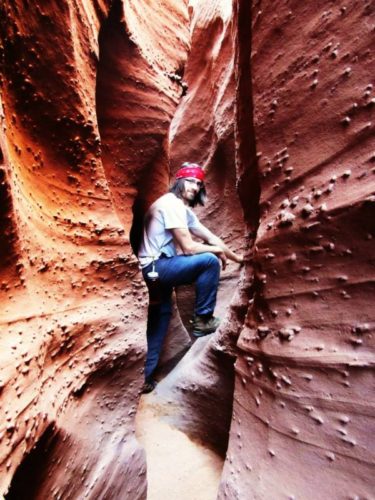
CaniCross, CaniBike and CaniScoot – High Octane Adventure with Your Four-Legged Pal
Adventure Is Calling

CaniSports take on running, biking and scooting with the dog at the helm. It’s completely chaotic, extraordinary fun, and a frenzied pairing of mutt and mud.

Meet the Author!
Daisy Atkin: I am fortunate enough to live in beautiful Devon, England. Together with my four-legged best friend, I split my time between wild swimming, trail running, hiking and wild camping on the moors. I am passionate about opening up the outdoors to everyone, regardless of financial situation, ability or background. When not outside, I’m usually found baking in my kitchen or planning my next adventure!
Guide At a Glance
- Is this author an Adventurer?
- Is this Guide based on experience?
Your Next Quest
What you need to know before you go!
With the introduction of more modern methods of transport, such as snowmobiles and 4x4s, the role of the sled dog has gradually declined as a working practice, and is now seen more as a sport and leisure activity than an industrial requirement. Indeed, each year people spend thousands on visiting the Arctic circle to experience sledding with dogs, and annual racing events such as the Iditarod Trail keep this recreational activity in the spotlight.
But what happens when the winter’s over, and the dogs need exercising? Enter CaniSports and Mushing. Born from a need to keep sled dogs conditioned during the off season, CaniSports have evolved to take on running, biking and scooting, with the dog at the helm leading the way. It is completely chaotic, extraordinary fun, and a frenzied pairing of mutt and mud.
How do you go CaniCross?
The ‘Cani-‘ activities cover three main areas: CaniCross, CaniBike and CaniScoot.
CaniCross
CaniCross is essentially trail running with your dog, CaniBike involves cross country mountain biking with the pooch, and you guessed it, CaniScoot is basically the same as bike, but with a specially adapted all terrain scooter instead. In each case, the dog is attached either to the human or the equipment via a bungee line and harness, and the two work together to cover a set trail or route.
CaniCross is the simplest form of human/dog sport, as it requires very little equipment other than a suitable dog harness, bungee leash and running belt. If you enjoy running with your dog anyway, then CaniCross is a great way to build up the bond between you, and to teach your dog a new set of skills. Where CaniCross differs from a simple run with your dog, is in the way the dog leads. The dog is encouraged to pull into the harness, and as the human you ‘steer’ the dog around the course with commands. It is a real test of communication between the two of you, but once the dog gets to understand what you want, this simple run turns into something both of you can grow to love.
CaniBike
With CaniBike, or Bikejor, the dog is attached to the bike via a bungee line which is attached to a special ‘arm’ on the bike. Again, the dog is out front, pulling the bike along with pedal powered assistance from the human. Similarly to CaniCross, you need to teach your dog directional commands and cues for speed, stopping and starting.
CaniScoot
In CaniScoot, similar to CaniBike, the dog is attached to a specially adapted scooter by a bungee. These scooters are definitely not the ones you see people riding around in cities – they have big, mountain-bike sized front wheels with rubber tyres, and a slightly smaller rear tyre. In between is the platform which the human uses with one foot on, one foot off, in the same manner as a normal scooter. Think of it as a bike without a saddle, and you’re just about there.
Teach me your ways!
If your dog can run, it can CaniCross. If you can bike, you can CaniBike. Breeds of dogs from all over the world participate in the sports, from Labradors to German Shepherds, Collies to Beagles, as long as they are fit, healthy and at least a year old. Care should be taken with brachiocephalic breeds such as bulldogs, as they tire more easily and find it harder to breathe normally. Always consult your vet for advice before undertaking any kind of new sport with your pooch!
Whilst in its most basic forms this is a run with your dog, it is really important to make sure your equipment is right and your dog has basic training to start with. You also need to teach your dog to pull into the harness if it doesn’t naturally do so. You can achieve this in a couple of ways, including getting a friend to run slightly ahead of you and encourage your dog to pull towards them, or by rolling/throwing a tennis ball ahead of your dog and encouraging it to run into the harness to get it. When your dog is pulling, give them lots of verbal cues such as ‘go go go’, ‘yes’ or ‘good dog’ – really emphasize the encouragement and fun for your dog!
When you’re out on the trails, it’s important that your dog is trained to respond to voice cues, as you are responsible for ‘steering’ your dog around a course. Many CaniCrossers use sledding / mushing terms such as ‘gee’ (right), ‘haw’ (left), ‘whoa’ (stop) and ‘hike on’ (more pulling power). Of course, you can use whatever words you like as long as your dog understands what you mean! You can start to teach directional cues whilst on your regular walks, for example when approaching a left turn, say ‘haw’ and hold your left arm out. As soon as the dog has taken the corner, reinforce the behavior with a ‘good dog’ or ‘yes’.
Teaching your dog to run with a bike or scooter can be a bit trickier, but is a lot of fun when you’ve cracked it! Start off slowly and gradually build up your biking and scooting. Begin by teaching them to pull into the harness with you on a walk or run before progressing to biking and scooting.
Need some inspiration?
Still undecided?
PROS
- Fantastic physical and mental exercise for both you and your dog
- Provides additional training and builds the bond between you and your dog
- In its most basic form, only minimal equipment is required
- Can be done pretty much anywhere you would normally run, bike or scoot
CONS
- Not suitable for all dog types, especially brachiocephalic breeds
- You may need additional liability insurance, depending on where in the world you are and local laws
- Poorly fitting equipment can cause injury to you and your dog
- …you do need a dog!
Inspire


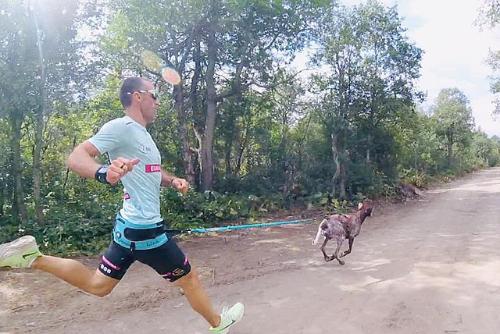

Where and When to Go?
Biome
CaniSports can be done pretty much anywhere you would normally trail run, mountain bike or go hiking. Depending on how well trained your dog is, you may want to start off with clearly defined trails which make it easy for the dog to understand the direction your want them to go in, before heading out into harder, more open areas.
Season
Typically, CaniSports take place in cooler climates where dogs can run without overheating. It can be easy for us to think that just because we can go for a run, our dog can too – but don’t forget that dogs cannot regulate their temperatures as easily as we can, and they have a permanent fur coat on! Be considerate of your dog and don’t run with them if it is too hot. As a result of this, the CaniCross season typically spans between September and April / May in the northern hemisphere, leaving out the hotter summer months.
Regions
CaniSports can be done pretty much anywhere you would normally trail run, mountain bike or go hiking. Depending on how well trained your dog is, you may want to start off with clearly defined trails which make it easy for the dog to understand the direction your want them to go in, before heading out into harder, more open areas.

UK/Europe
The UK is the home of modern CaniCross racing! Trail Runners, the official organization of CaniSports, is headquartered in Great Britain. CaniSport races have overflowed the UK and are now found in France, Germany, and the surrounding western European countries.
In northern Europe, CaniSports go by other names such as skijoring, bikejoring, and dryland mushing. Again, these sports have a long traditional history among cultures that depended on canines for winter transportation.

North America
Although CaniSports are relative newcomers to the USA, there’s lot of interest! You can get involved through organizations like CaniCross USA and the North American CaniCross, which has aspirations to develop the activity into an Olympic sport!
Essential Outdoor Skills
What outdoor and survival skills should I master before embarking?
The key thing to remember is that it is not just you that needs looking after on the trail – you’ve got a furry companion to care for too! Whilst most CaniCross events take place within semi-rural areas, it is still good practice to know a few basic outdoor skills for you and your dog:
- Know your first-aid for both human and canine. Make sure you carry a small first-aid kit, including band-aids/bandages for you, tick-removers, tweezers and paw wax for your dog.
- Know how to read a map and use a compass to navigate with. It is really easy to get lost if you are speeding along, and missing a single turn could result in you losing your bearings quickly.
- Ensure you tell someone where you’re going, what you’re doing and what time you expect to be back.
- Carry the number of a vet with you for emergencies. You could also pick up a special dog-sling and carry it in a trail backpack in case you need to evacuate an injured dog.
- Take a simple tool kit and puncture repair kit with you if you’re going biking or scooting. No one wants to be stranded in the middle of nowhere with a flat tire!
- Carry enough hydration for you and your dog. Make sure you know how to filter water if you plan on drinking from natural sources, and make sure you have a portable bowl or bag your dog can drink from.
- Leave no trace. Pack out what you pack in, including your dog’s droppings!
Numbers to remember
Safety & Risk
Is this adventure for you?
Although CaniSports are relatively low-risk activities, as above, you must account for your dog’s wellbeing as well as your own. The most important factor for your dog is comfort, so a properly fitted harness is a must. Get some advice from your vet, local CaniSports chapter or pet store on how to fit a harness, and make sure there aren’t any spots where it could rub and hurt your dog.
If you are CaniBiking or CaniScooting, then a safety helmet is an absolute must. It is also recommended to wear bike goggles, knee/elbow pads and gloves, and body armour if you are new to the sport.
Your dog should be in good health – check with a vet if you’re not sure! Check their pads for thorns and fur for ticks after every session to ensure no nasty surprises a few days later.
- Get a properly fitted dog harness!
- Seek advice from a vet.
- Wear a helmet!
DO'S
- Find a local group or chapter to train with.
- Speak to your vet or chapter for advice on equipment, including harnesses.
- Consider taking a canine first aid course – your vet should be able to point you in the direction of a local one.
- Praise your dog and cool them down appropriately at the end of a session. This is a fun sport for both of you, not a route march!
DONT'S!
- Push your dog further than they are ready to go, especially with younger dogs. Build up gradually to longer distances.
- Assume your dog will get it right the first time and every time. They need guidance, reassurance and positive rewards.
- Take your dog to a meet or race if they aren’t properly socialized. Nobody wants to break up a dog fight.
Wildlife
What animals can I expect to encounter?
Remember that dog from the film Up? The one that’s obsessed with squirrels? Hello, Doug!
Chances are, your dog is pretty fascinated by these little critters too. Depending on where you are in the world, your dog could take off after anything from a bird to a moose, and it is really important to train them to listen to you and hold off. Do not let your dog spook the local wildlife, and reward them for listening to your commands and ignoring them.


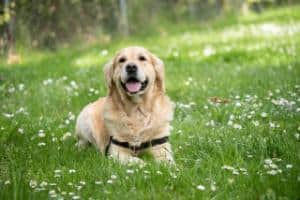
Fitness & Training
What is the recommended level of fitness?
The great thing about CaniSports is that they really are all-ability. If you don’t fancy trail running, you can trail walk! You can still train your dog to pull on the harness and teach them directions and commands. As (both of) you get fitter, you can progress to more running as you become more comfortable.
If biking is more your thing, then that’s fine too! Two wheels and four paws have never been so in tune than when CaniBiking or CaniScooting. It might take a little more time to train your dog, but if you’re more at home on a bike than in running shoes, then that’s fine. Remember that you will be going faster on a bike, so your dog will need to build up more fitness to cope with the extra demands placed on them.
Training and preparation exercise regimen
Many local CaniSport groups offer beginner sessions which will acclimatize you and your dog to the sports, commands and activities. When not out in the field, practice training your dog at home so they understand cues and directions. Make sure you build up your routines slowly with a running plan which you can both follow to build up your fitness and stamina.
Hiking
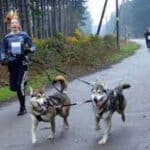
Nothing beats mileage! Find some beautiful trails near you and take your furry friend on a jaunt.
Lunges

Forward and reverse lunges, bodyweight and loaded, will strengthen your entire lower body and stabilize your core.
Gear Guide
What gear do I need for this trip?
Again, the beauty of CaniSports lies in the fact that they are so simple to start with.
Required Gear
- All you need is a well-fitted dog harness, bungee leash and running belt. You can even start with a normal collar and leash if you want! Other than that, make sure you have a good pair of trail running shoes, and clothes which you are comfortable wearing out on a run or on the bike.
- If biking or scooting, you must wear a helmet at minimum, and it is advised that you have some biking goggles, elbow/knee pads, gloves and body armour. It is also wise to carry a puncture repair kit and mini tool kit.
Supporting Gear
It is worth investing in a trail running backpack, which is lightweight and easy to carry without holding you back. This can hold a multitude of useful things, but I would recommend:
- Hydration bladder/water bottles
- Dog water bowl
- Human and canine snacks
- An emergency dog sling
- First aid kit, at minimum tweezers and a tick remover
Accessories & Apps
Consider getting some paw wax for after your activity when you’re back home – this helps soften the paw pads and heal any cuts.
Finances & Budget
What are the costs associated with this adventure?
As with so many sports, Cani events can cost as much or as little as you are willing to put into it. CaniCross is by far the cheapest, since mountain bikes and off-road scooters aren’t cheap.
Gear & Products
Price:
- A decent dog harness can set you back anywhere between $20 – $200 (top tip – sites like eBay, Craigslist and Facebook Marketplace are brilliant for used gear), whilst a simple bungee leash and belt ranges from $10-$30.
- A cheap mountain bike ($300 – $800) will be fine for starting out in the sport, but if you are looking to take on organized events and races, then you’ll want something better! ($1,000-$4,000).
- An adult scooter (often called a BMX scooter or big wheel scooter) should set you back between $120 and $200 new, although you can pick them up for as little as $50 second hand
Food & Nutrition
Price:
Again, food and nutrition is what you make of it. I personally tend to live off granola bars when I’m out running, which is a cheap and cost-effective way of getting the energy I need. If you’re stopping for a coffee on the way back to socialize, then add that in too!
Transportation
Price:
Depending on where you live, you may have to get out of town to find some good trails. You can go ‘urban mushing’ in parks around towns and cities, but be careful if taking a bike or scooter as these are more restricted than just running with your dog.
- Automobile: Yes
- Airplane: Not Needed
- Boat: No
- Horse: No
- Train: Sometimes
- Bus/Shuttle: Sometimes
- Dragon: Transportation by dragon not available for this area.
Accommodations
Price:
If you’re planning on competing in CaniSports, then you will need to consider overnight accommodation near to your races. This can be anything from camping to hotels, whatever is within your budget.
- Camping: Yes
- Hotels: Yes
- Boat: Rarely
- Friends: Make new ones!
Miscellaneous
Price:
- You may need to take out additional liability insurance if you’re biking or scooting in State/National Parks or Forestry Commission land (UK).
- You may also need a permit to run, hike, bike or scoot in some locations.
- If you’re transporting a bike, you may need a bike rack for your car, which can cost anywhere between $30-$200.
Savings Tips
- Car Share – if you’re entering an event which is a way off, try to find another local Cani person to car share with.
- Join a national body – this may save you fees on races, or give you discounts at CaniSports shops.
Insider Tips
Here's what most people don't know!
You don’t have to be a seasoned trail runner to do this – many people start off by ‘CaniHiking’!
What does no one tell you?
Your dog will poop in the most awkward location during the middle of a race when you’re running your best time. It happens to everyone! Pick it up and move on.
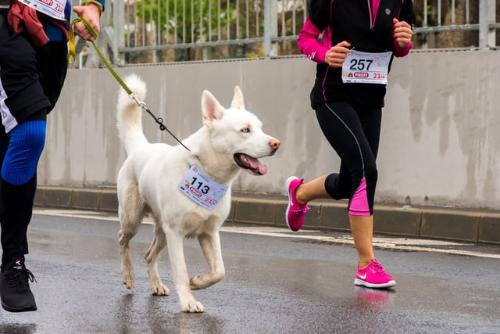
FAQ
Of course! Events attract many spectators as the sport is pretty unusual. Plus, think of all the dogs to pet (just make sure you ask first!)
For humans? No.
Dogs should be at least 12 months old for CaniCross, and 18+ months for CaniBike and CaniScoot.
If you (or your dog) is caught short, don’t stress. Go, pick it up, move on. Depending on where you are, you can also ‘stick and flick’ dog poop into the undergrowth – this is a more natural way of it decomposing than using plastic bags.
See Notes on transportation in the Finances & Budget section.
See notes in the “Where and When to Go?” section.
Yes! Some places offer the sport as an experience day, with specially trained dogs.
That’s OK, you don’t have to. You can do all these sports without one!


